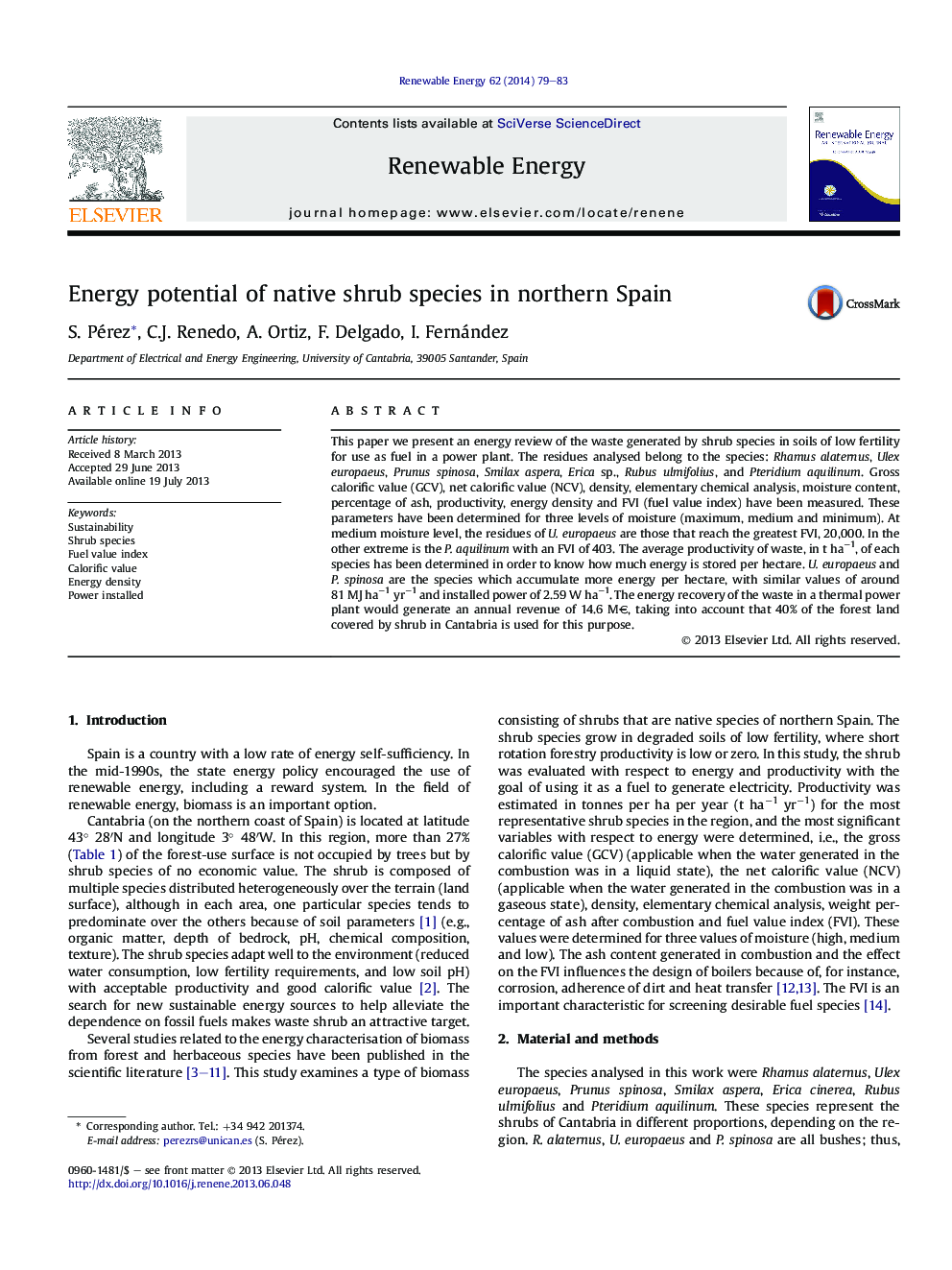| Article ID | Journal | Published Year | Pages | File Type |
|---|---|---|---|---|
| 6768631 | Renewable Energy | 2014 | 5 Pages |
Abstract
This paper we present an energy review of the waste generated by shrub species in soils of low fertility for use as fuel in a power plant. The residues analysed belong to the species: Rhamus alaternus, Ulex europaeus, Prunus spinosa, Smilax aspera, Erica sp., Rubus ulmifolius, and Pteridium aquilinum. Gross calorific value (GCV), net calorific value (NCV), density, elementary chemical analysis, moisture content, percentage of ash, productivity, energy density and FVI (fuel value index) have been measured. These parameters have been determined for three levels of moisture (maximum, medium and minimum). At medium moisture level, the residues of U. europaeus are those that reach the greatest FVI, 20,000. In the other extreme is the P. aquilinum with an FVI of 403. The average productivity of waste, in t haâ1, of each species has been determined in order to know how much energy is stored per hectare. U. europaeus and P. spinosa are the species which accumulate more energy per hectare, with similar values of around 81 MJ haâ1 yrâ1 and installed power of 2.59 W haâ1. The energy recovery of the waste in a thermal power plant would generate an annual revenue of 14.6 Mâ¬, taking into account that 40% of the forest land covered by shrub in Cantabria is used for this purpose.
Related Topics
Physical Sciences and Engineering
Energy
Renewable Energy, Sustainability and the Environment
Authors
S. Pérez, C.J. Renedo, A. Ortiz, F. Delgado, I. Fernández,
